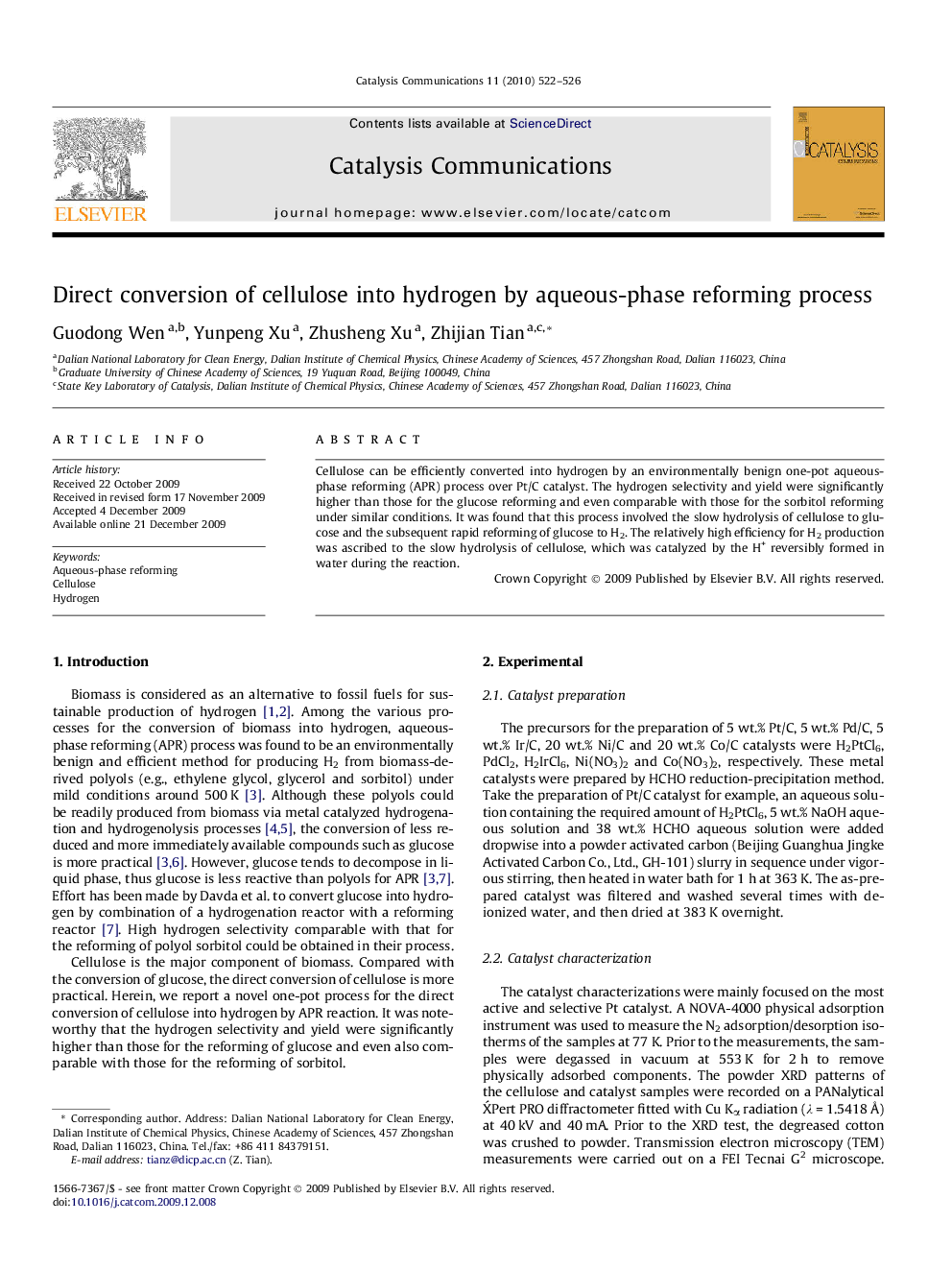| Article ID | Journal | Published Year | Pages | File Type |
|---|---|---|---|---|
| 51084 | Catalysis Communications | 2010 | 5 Pages |
Abstract
Cellulose can be efficiently converted into hydrogen by an environmentally benign one-pot aqueous-phase reforming (APR) process over Pt/C catalyst. The hydrogen selectivity and yield were significantly higher than those for the glucose reforming and even comparable with those for the sorbitol reforming under similar conditions. It was found that this process involved the slow hydrolysis of cellulose to glucose and the subsequent rapid reforming of glucose to H2. The relatively high efficiency for H2 production was ascribed to the slow hydrolysis of cellulose, which was catalyzed by the H+ reversibly formed in water during the reaction.
Related Topics
Physical Sciences and Engineering
Chemical Engineering
Catalysis
Authors
Guodong Wen, Yunpeng Xu, Zhusheng Xu, Zhijian Tian,
